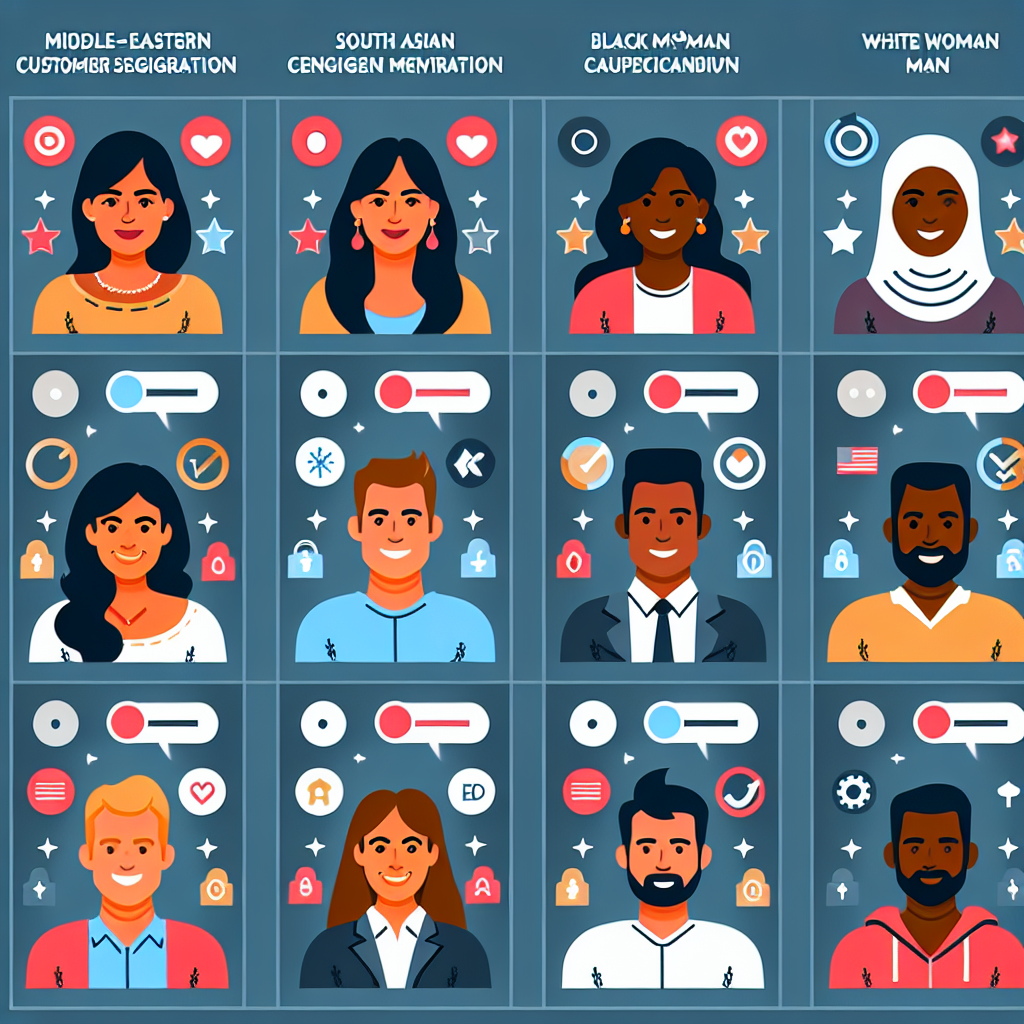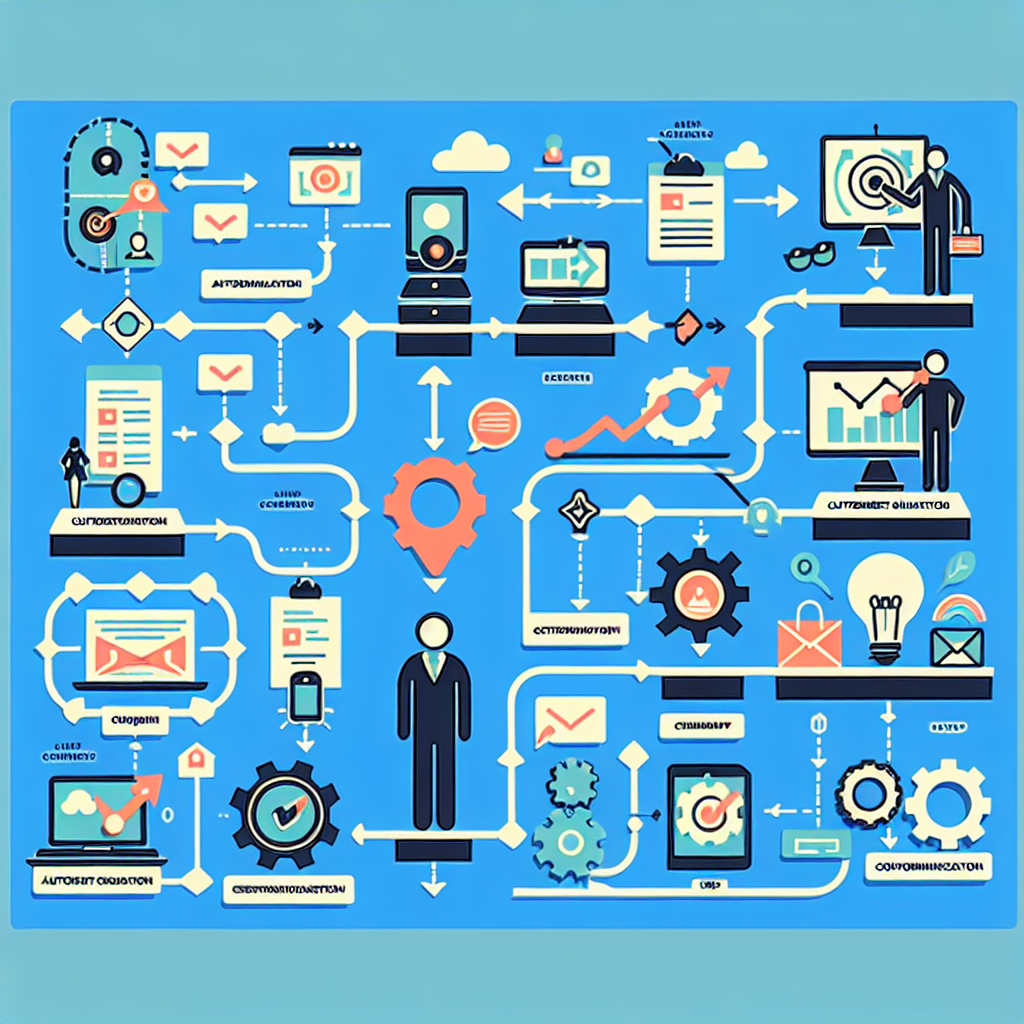Step-by-Step Guide to Implementing Customer Follow-Up Automation
Introduction to Customer Follow-Up Automation
So, what’s the buzz about customer follow-up automation? Imagine a world where you can effortlessly keep your customers engaged without lifting a finger. Sounds dreamy, right? Well, welcome to the realm of automated customer follow-up! This nifty strategy uses technology to streamline your communication processes, ensuring that your clients feel valued and heard long after their initial purchase.
Definition of customer follow-up automation
At its core, customer follow-up automation is all about using tools and software to manage communications with customers post-sale. Think of it as setting up a well-oiled machine that sends out automated follow-up emails, reminders, and personalized messages based on customer interactions. It’s like having a virtual assistant who never sleeps!
Importance in modern marketing strategies
In today’s digital landscape, engaging with customers is more crucial than ever. A well-implemented post-sale follow-up automation strategy can drastically improve customer retention rates and satisfaction levels. It’s not just about making a sale; it’s about cultivating relationships that last. According to recent studies, businesses that prioritize automated customer engagement see a significant boost in repeat purchases.
Overview of the benefits for businesses
Let’s break down why customer engagement automation should be on your radar:
- Enhanced Customer Interaction: Automated communication with customers allows for timely responses, which can boost overall satisfaction.
- Streamlined Processes: With workflow automation for customer service, you reduce manual effort in outreach tasks and free up time for your team to focus on more strategic initiatives.
- Email Sequence Automation: Schedule follow-ups automatically based on user behavior-no more missed opportunities!
- Improved Response Time: Using tools like CRM follow-up automation means you can enhance response times significantly.
- Personalization: Tailor your messaging to each client with personalized follow-up messages that resonate.
- Simplified Feedback Collection: Automate customer feedback processes to gain insights without the hassle!
Key Takeaway:
Customer follow-up automation isn’t just a trend; it’s a necessity for businesses looking to thrive in an increasingly competitive market. By embracing this technology, you can enhance CRM features and ensure that every client feels important.
The journey into the world of customer follow-up automation is just beginning! In the next sections, we’ll dive deeper into understanding the basics, identifying needs, selecting tools, designing workflows, and implementing these strategies effectively. Buckle up-your business is about to get a serious upgrade!

Understanding the Basics of Customer Follow-Up Automation
Diving into the world of customer follow-up automation can feel like stepping into a sci-fi movie where robots do all the heavy lifting. But fear not! This technology is here to make your life easier, not replace you. Let’s explore the key components, types of communications, and tools that will help you become a follow-up automation wizard.
Key components of customer follow-up automation
To build a robust client follow-up system, understanding its key components is essential:
- Automated Communication: Set up automated reminders for customers and notifications that keep your clients in the loop without any manual effort.
- Email Sequence Automation: Design workflows that send out automated follow-up emails triggered by customer actions-like making a purchase or abandoning their cart.
- Customer Feedback Automation: Gather insights effortlessly by automating feedback requests after interactions or purchases.
- Personalization: Use data to craft personalized follow-up messages that resonate with individual customers, enhancing their experience.
- Scheduling Follow-Ups Automatically: Take the guesswork out of timing; schedule your follow-ups based on optimal engagement times for each customer segment.
Types of follow-up communications (emails, SMS, etc.)
Your sales follow-up automation strategy should include various channels to reach customers effectively. Here are some popular types:
- Email: The classic choice! Send tailored emails at different stages-welcome messages, purchase confirmations, and post-sale check-ins.
- SMS/Text Messages: Perfect for quick updates or reminders. Just make sure you have consent first!
- Push Notifications: Engage users directly on their devices with timely alerts about promotions or new products.
- Socia Media DMs: Use social platforms to reach out personally; it shows you care about their experience beyond traditional channels.
- YouTube Videos or Webinars: Share helpful content related to their purchase-think tutorials or product showcases!
Common tools and software used for automation
The right tools can make all the difference in your customer engagement automation. Here are some popular options you might consider:
| Tool Name | Description | Main Features |
|---|---|---|
| CleverTap | A comprehensive customer engagement platform. | Email/SMS marketing, push notifications, analytics. |
| Zaius (now part of Optimizely) | A CRM solution focused on B2C marketing automation. | Email sequences, customer segmentation, reporting tools. |
| Pipedrive | A sales-focused CRM with excellent follow-up capabilities. | Email integration, workflow automation, task reminders. |
Key Takeaway:
The world of customer follow-up automation is rich with opportunities to enhance your business processes. By understanding its core components and leveraging various communication types through effective tools, you'll be well on your way to improving customer satisfaction and retention rates!
The next step in our guide will focus on identifying your specific customer follow-up needs. Are you ready to optimize your strategy? Let’s keep rolling!
Identifying Your Customer Follow-Up Needs
Now that we’ve set the stage for customer follow-up automation, let’s dive into the nitty-gritty of identifying your specific follow-up needs. This is where the magic happens! Understanding your current processes, target audience, and setting clear goals will set you on a path to success.
Assessing your current customer engagement process
Before you can automate anything, it’s crucial to take stock of how you currently engage with customers. Think of this as a self-audit for your customer communication strategies. Here’s what to evaluate:
- Touchpoints: Identify all the points where you interact with customers-from initial contact to post-sale follow-ups. Are there gaps where customers might be slipping through the cracks?
- Response Times: How quickly do you respond to inquiries? If it takes longer than a coffee break, it might be time to consider automated reminders for customers.
- Customer Feedback: Are you collecting feedback after interactions? If not, you could be missing out on valuable insights that could inform your follow-up strategies.
- Manual Efforts: Pinpoint tasks that are repetitive and time-consuming. These are prime candidates for workflow automation for customer service.
Determining target audience segments
Your audience isn’t one-size-fits-all; different segments have different needs. Segmenting your audience allows you to tailor your automated follow-up emails, ensuring they hit home every time. Here’s how to get started:
- Demographics: Consider age, location, gender, and other demographic factors that influence buying behavior.
- Purchase History: Analyze past purchases to identify trends and preferences-this will help in crafting personalized follow-up messages.
- Engagement Levels: Segment based on how engaged customers are with your brand. Are they repeat buyers or one-time visitors?
- User Behavior: Track actions such as website visits or abandoned carts to tailor communications effectively.
Setting clear goals for follow-up automation
No great journey begins without a destination! Setting clear goals will keep your customer follow-up automation efforts focused and effective. Here are some goals to consider:
- Increase Customer Retention: Aim for a specific percentage increase in repeat purchases over a defined period.
- Simplify Communication Processes: Set targets for reducing manual outreach efforts by implementing automated systems.
- Aim for Timely Responses: Establish benchmarks for response times post-purchase or inquiry-strive for under 24 hours!
- Tailor Content Effectively: Set objectives around personalizing messages based on customer behavior and preferences.
Your Next Steps!
The foundation is laid! By assessing your current engagement processes, segmenting your audience effectively, and setting clear goals, you're ready to dive into selecting the right tools for automation. Let’s keep this momentum going!

Selecting the Right Tools for Automation
Alright, folks! It’s time to roll up those sleeves and dive into the nitty-gritty of selecting the right tools for customer follow-up automation. Think of this as choosing your superhero squad-each tool has its own unique powers that can help you conquer customer engagement challenges. But how do you pick the best sidekicks? Let’s break it down!
Criteria for choosing automation tools
When it comes to picking your follow-up automation tools, there are several criteria to consider. Here’s a checklist that will help you make an informed decision:
- User-Friendliness: The tool should be easy to navigate without needing a PhD in computer science.
- Integration Capabilities: Ensure it plays nice with your existing systems, like CRM or email platforms. You want seamless integration of follow-up processes!
- Features and Functionality: Look for features like automated reminders for customers, email sequence automation, and data analytics to track performance.
- Scalability: Choose a tool that can grow with your business. If you plan to expand, you want something that won’t cramp your style!
- Customer Support: Reliable support is crucial. When tech hiccups happen (and they will), you’ll want someone on speed dial.
Comparative review of popular automation platforms
Now that we have our criteria set, let’s take a look at some popular automation platforms that can help enhance your customer engagement automation. Here’s a quick comparison:
| Platform Name | Description | Main Features | Best For |
|---|---|---|---|
| HubSpot | A comprehensive marketing platform with CRM capabilities. | Email marketing, lead nurturing automation, analytics. | B2B businesses looking for an all-in-one solution. |
| ActiveCampaign | Email marketing and CRM combined with powerful automation features. | Email sequences, sales follow-up automation, segmentation. | Small to medium-sized businesses focused on email marketing. |
| Pipedrive | A sales-focused CRM designed for managing leads effectively. | Email integration, automated task reminders, reporting tools. | SaaS companies needing robust sales follow-up capabilities. |
Integration capabilities with existing systems
The magic of customer follow-up automation truly shines when your chosen tools integrate smoothly with existing systems. Here are some integration points to consider:
- Email Platforms: Make sure your tool connects with popular services like Mailchimp or SendGrid for effective email outreach.
- CRM Systems: Look for compatibility with CRMs like Salesforce or Zoho to keep customer data synced and organized.
- E-commerce Platforms: If you're in retail, ensure it integrates with Shopify or WooCommerce to automate post-purchase communication effortlessly.
Your Next Move!
Selecting the right tools is pivotal in optimizing your customer follow-up automation. By evaluating user-friendliness, integration capabilities, and essential features, you're setting yourself up for success. Ready to design your follow-up workflow? Let’s keep this momentum going!
Designing Your Follow-Up Workflow
Welcome to the creative zone of customer follow-up automation! This is where we take all those fancy tools and strategies and mold them into a workflow that keeps your customers engaged, happy, and coming back for more. Think of it as crafting a playlist for a road trip; you want to make sure every song hits just right!
Mapping out customer journey stages
The first step in designing your follow-up workflow is understanding the customer journey. This journey is like a treasure map, guiding your customers from their first interaction with your brand to becoming loyal advocates. Here’s how to map it out:
- Aware Stage: At this point, customers are just discovering you. Use automated follow-up emails to introduce your brand and share valuable content.
- Consideration Stage: Customers are weighing their options. Send personalized messages highlighting benefits, testimonials, or case studies.
- Decision Stage: They’re ready to buy! Use post-sale follow-up automation to confirm their purchase and set expectations for delivery.
- Loyalty Stage: After the sale, keep the conversation going with automated reminders for feedback or special offers that reward their loyalty.
Creating personalized messaging strategies
No one likes generic messages-it’s like receiving a birthday card with no personal touch. Personalization is key in customer engagement automation. Here’s how to craft messages that resonate:
- Use Customer Data: Leverage data from previous interactions to tailor your messages. For example, if they bought running shoes, send them tips on maintaining those shoes or suggest matching gear!
- Segment Your Audience: Not all customers are created equal. Segment them based on behavior or demographics to send targeted communications that feel relevant.
- Create Dynamic Content: Use tools that allow you to create dynamic content within emails-like changing images or text based on user preferences.
- A/B Testing: Experiment with different messaging styles or formats. See what gets better engagement and refine your approach accordingly!
Establishing timing and frequency of follow-ups
The timing of your follow-ups can make or break your strategy. Too soon, and you risk annoying customers; too late, and they might forget about you altogether! Here’s how to nail it:
- The 24-Hour Rule: For post-purchase follow-ups, aim for an email within 24 hours-this shows you care about their experience right away.
- Scheduling Regular Check-Ins: Set up periodic check-ins (weekly or monthly) based on customer preferences-this keeps you top-of-mind without overwhelming them.
- Avoid Overkill: Don’t bombard customers with emails; instead, use email sequence automation. Space out communications so each one feels intentional.
- User Behavior Triggers: Automate follow-ups based on specific actions-like cart abandonment-to catch potential buyers at critical moments.
Your Next Steps!

Implementing Customer Follow-Up Automation Steps
Ready to dive into the nitty-gritty of customer follow-up automation? Buckle up, because we’re about to turn your follow-up dreams into reality! Here are three essential steps to get you started on your automation journey.
Step 1: Setting up your chosen software tool
Your first mission, should you choose to accept it, is to set up the follow-up automation tools you've selected. This is like assembling your superhero team-each tool has its unique strengths that will help you tackle customer engagement challenges. Here’s how to get started:
- Choose Your Tool: Pick a platform that aligns with your needs. Whether it's HubSpot for an all-in-one solution or ActiveCampaign for robust email marketing, ensure it fits your business model.
- Create an Account: Sign up and complete any necessary onboarding processes. Most platforms offer guided tours-take advantage of these!
- Integrate with Existing Systems: Connect your new tool with existing systems like CRM and e-commerce platforms. This will enable seamless data flow and enhance customer engagement automation.
- Customize Settings: Adjust settings according to your business needs. This includes notification preferences, user permissions, and branding elements to ensure consistency in communication.
Step 2: Creating templates for follow-up messages
No one likes sending out bland messages-it’s like serving plain toast at a gourmet breakfast! Let’s spice things up by creating templates for your automated communications:
- Email Templates: Craft engaging email templates for various scenarios-welcome emails, post-purchase check-ins, or feedback requests. Use personalization tokens to make each message feel tailored.
- SMS Templates: If you're using SMS as part of your strategy, create concise and impactful messages that convey value quickly. Think reminders or exclusive offers!
- A/B Testing Variants: Design different versions of templates for A/B testing. Experiment with subject lines, content styles, or call-to-action phrases to see what resonates best with your audience.
- Add Visuals: Incorporate images or graphics where appropriate-visual content can significantly enhance engagement rates!
Step 3: Automating triggers based on customer actions
This is where the magic happens! Automating triggers allows you to send timely communications based on specific customer actions. Here’s how to set it up effectively:
- User Behavior Tracking: Set up tracking mechanisms within your chosen platform to monitor actions like purchases, cart abandonments, or website visits.
- Create Triggered Workflows: Design workflows that automatically send follow-ups when specific conditions are met-for example, sending a thank-you email immediately after a purchase.
- Aim for Timeliness: Ensure that the timing of automated messages aligns with customer behavior; quick responses can significantly improve customer satisfaction.
- Nurture Leads Effectively: Use lead nurturing automation strategies by sending targeted content based on where customers are in their journey-from awareness to consideration!
Your Next Move!
Testing and Optimizing Your Automation Process
Congratulations! You’ve set up your customer follow-up automation system, and now it’s time to put it through its paces. Think of this phase as the ultimate test drive; you want to ensure everything runs smoothly before hitting the open road of customer engagement. Let’s explore how to effectively test and optimize your automation process!
Importance of Testing Your Automation
Before you unleash your automated communication with customers, it's crucial to test every aspect of your setup. Testing helps identify potential hiccups that could affect customer experience. Here’s why it matters:
- Quality Assurance: Ensure that all messages are sent correctly, with no typos or broken links. After all, you wouldn’t want to send out an email that looks like it was written in a rush!
- User Experience: Testing allows you to evaluate how customers interact with your automated messages. Are they engaging with your content? Are they finding what they need?
- Identifying Bottlenecks: Spot any delays or issues in the automation workflow that could hinder timely responses.
- Feedback Loop: Gathering feedback during testing can help refine your messaging and improve overall effectiveness.
Strategies for Effective Testing
Your testing process should be as thorough as a chef tasting their dish before serving. Here are some strategies to ensure everything is on point:
- A/B Testing: Experiment with different versions of emails or messages. Test subject lines, content styles, or call-to-action phrases to see what resonates best with your audience.
- User Simulation: Run through the entire customer journey yourself or have team members simulate various scenarios. This helps uncover any unexpected issues.
- Email Deliverability Checks: Use tools to check if your emails land in inboxes rather than spam folders. A missed message can mean a missed opportunity!
- Monitor Engagement Metrics: Track open rates, click-through rates, and response times during testing phases to gather insights on performance.
Optimizing Your Follow-Up Automation
The real magic happens when you tweak and refine your processes based on testing insights. Here’s how to optimize effectively:
- Tweak Timing: Adjust the timing of follow-ups based on engagement data. If customers respond better at certain times, schedule accordingly!
- Purge Unresponsive Segments: If certain segments consistently show low engagement, consider revising your approach or removing them from specific campaigns.
- Add Personalization Elements: Use data from previous interactions to personalize follow-up messages even further-customers love feeling special!
- Simplify Workflows: Review each step in your automation process; if something feels overly complicated, streamline it for efficiency.
Your Key Takeaway!
The success of customer follow-up automation hinges on continuous testing and optimization. By implementing rigorous testing strategies and making data-driven adjustments, you’ll enhance customer satisfaction and retention rates significantly.
The journey doesn’t end here! Once you’ve tested and optimized, we’ll dive into troubleshooting common challenges that may arise in follow-up automation-stay tuned for solutions that will keep you ahead of the game!

Troubleshooting Common Challenges in Follow-Up Automation
Even the best-laid plans can hit a few bumps in the road. When it comes to customer follow-up automation, challenges are bound to arise. But don’t fret! We’re here to tackle some of the most common issues head-on, ensuring your automated customer follow-up remains smooth and effective. Let’s dive into these challenges and how to overcome them!
Lack of customer response or engagement
Picture this: you’ve set up your automated follow-up emails, scheduled them perfectly, and yet, crickets. No responses, no engagement. This can be frustrating, but there are ways to turn that silence into conversation:
- Refine Your Targeting: Ensure that your audience segments are accurate. If you're sending messages to the wrong people, they won’t engage.
- Personalize Your Messages: Generic messages are like cold calls in a digital world. Tailor your communications based on previous interactions or purchases to make customers feel valued.
- Test Different Timing: Experiment with when you send your follow-ups. What works for one segment might not work for another. Use A/B testing to find optimal times.
- Engage with Value: Provide valuable content rather than just promotional material. Think tips, tricks, or exclusive insights that resonate with their interests!
Ineffective messaging or timing issues
If your messaging isn’t hitting the mark or if you’re sending communications at odd hours (like 2 AM), it’s time for a makeover! Here’s how to fine-tune those messages:
- Craft Compelling Subject Lines: Your subject line is like the first impression at a party; make it count! Use engaging language that sparks curiosity.
- A/B Test Content: Experiment with different styles of communication-casual vs. formal, short vs. detailed-to see which resonates more with your audience.
- Optimize Send Times: Analyze engagement metrics to determine when your customers are most active and schedule follow-ups accordingly.
- Create Urgency: Incorporate limited-time offers or exclusive discounts in your messaging to encourage immediate action!
Navigating technical difficulties with automation tools
No one enjoys wrestling with technology-especially when it’s supposed to make life easier! If you encounter technical hiccups while using follow-up automation tools, consider these strategies:
- Utilize Customer Support: Most platforms offer robust support options-don’t hesitate to reach out for assistance when things go awry.
- Regular Training Sessions: Keep your team updated on platform features and best practices through regular training sessions; knowledge is power!
- Simplify Workflows: If a process feels overly complicated, take a step back and simplify it. Streamlined workflows reduce potential points of failure.
- Create Documentation: Develop internal documentation for troubleshooting common issues; this can serve as a quick reference guide for your team.
Your Key Takeaway!
The journey doesn’t end here! With troubleshooting strategies in hand, we’ll now explore the future of customer follow-up automation. Get ready for exciting trends on the horizon!
As we look to the horizon of customer follow-up automation, it’s clear that the landscape is evolving faster than a cheetah on roller skates. With the rise of new technologies and changing consumer expectations, businesses must adapt to stay ahead. Let’s explore the exciting trends shaping this future!
Evolving trends in digital marketing automation
The world of digital marketing is like a game of chess, where every move counts. Here are some key trends that are reshaping automated customer follow-up:
- Omni-channel Engagement: Customers expect seamless communication across various platforms, from email to social media. Integrating these channels into your client follow-up system ensures you meet customers where they are.
- Real-Time Interactions: Instant responses are becoming the norm. Automated systems that allow for real-time engagement can significantly improve customer satisfaction and retention rates.
- Increased Focus on Data Privacy: With growing concerns about data security, businesses must prioritize transparent communication about how customer data is used in customer engagement automation.
The role of AI and machine learning in personalization
If you thought personalization was just a buzzword, think again! AI and machine learning are revolutionizing how businesses tailor their communications:
- Predictive Analytics: By analyzing past behaviors, AI can predict future actions, allowing you to send timely and relevant automated follow-up emails. For instance, if a customer frequently buys running gear, send them personalized offers for new arrivals!
- Dynamic Content Creation: Machine learning algorithms can help create dynamic content that adapts based on user behavior. This means your emails can change depending on what products customers have viewed or purchased.
- Enhanced Customer Insights: AI tools can analyze vast amounts of data to provide insights into customer preferences and behaviors, enabling more effective segmentation for targeted campaigns.
Predictive analytics for enhancing follow-up strategies
The future is here, and it’s all about using data to drive decisions! Predictive analytics can transform your follow-up automation tools. Here’s how:
- Behavior Tracking: Understand what actions lead to conversions or drop-offs. This insight allows you to refine your messaging strategy based on actual customer behavior.
- A/B Testing Optimization: Use predictive models to determine which messages will resonate best with specific segments before launching large campaigns.
- Nurturing Leads Effectively: Automate follow-ups based on predictive insights about when leads are most likely to convert-think sending a reminder just as they’re considering a purchase!
Your Next Steps!